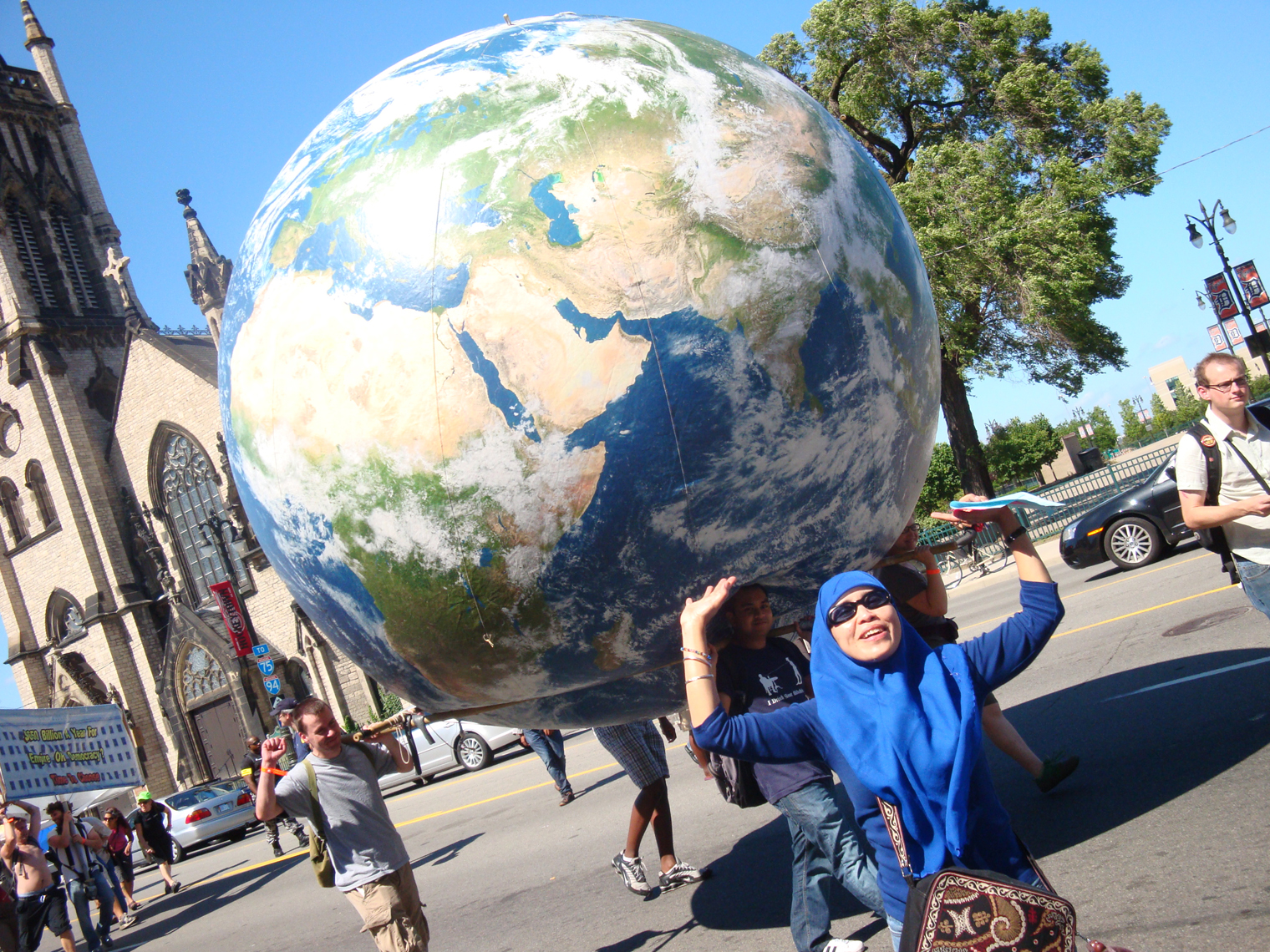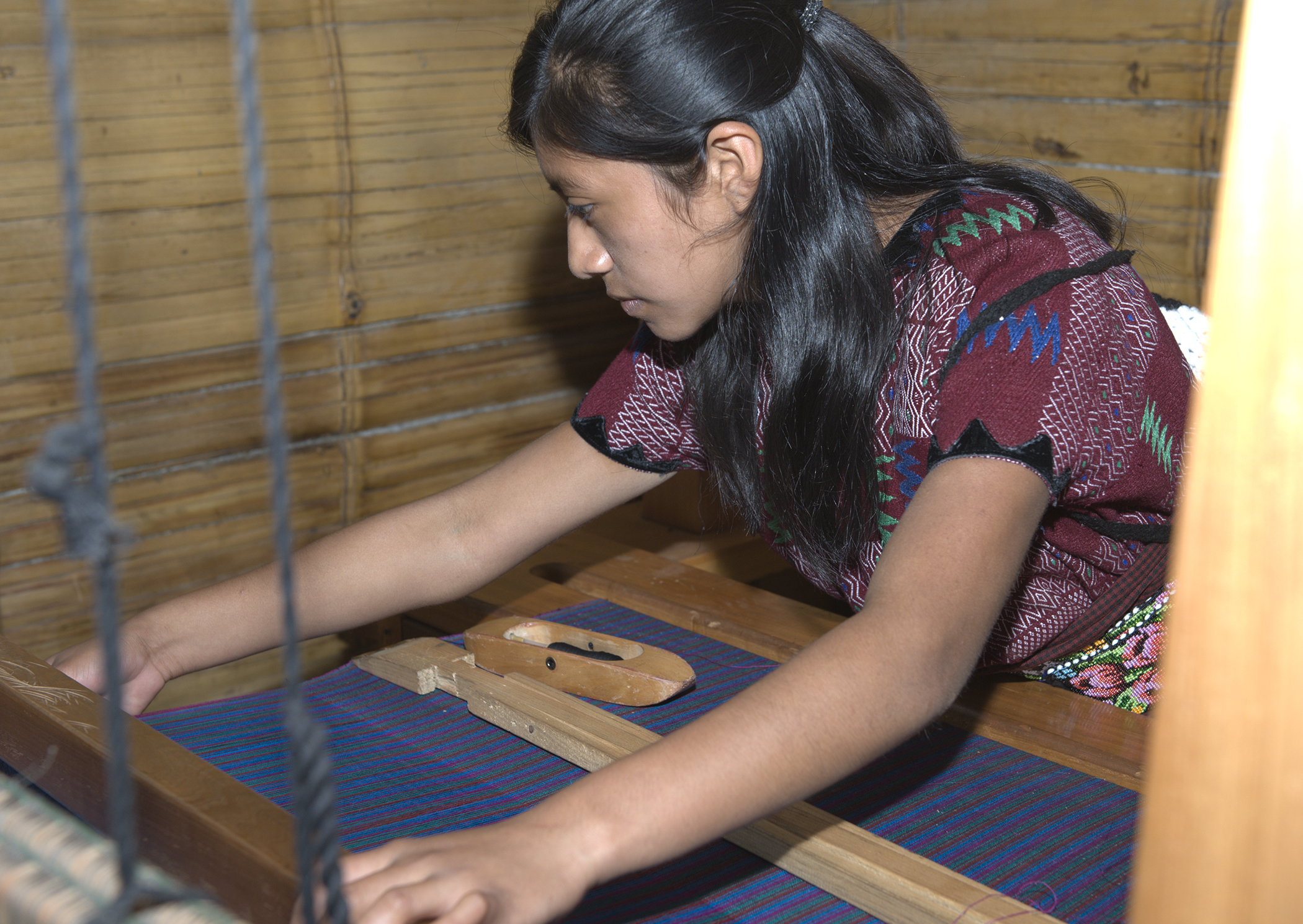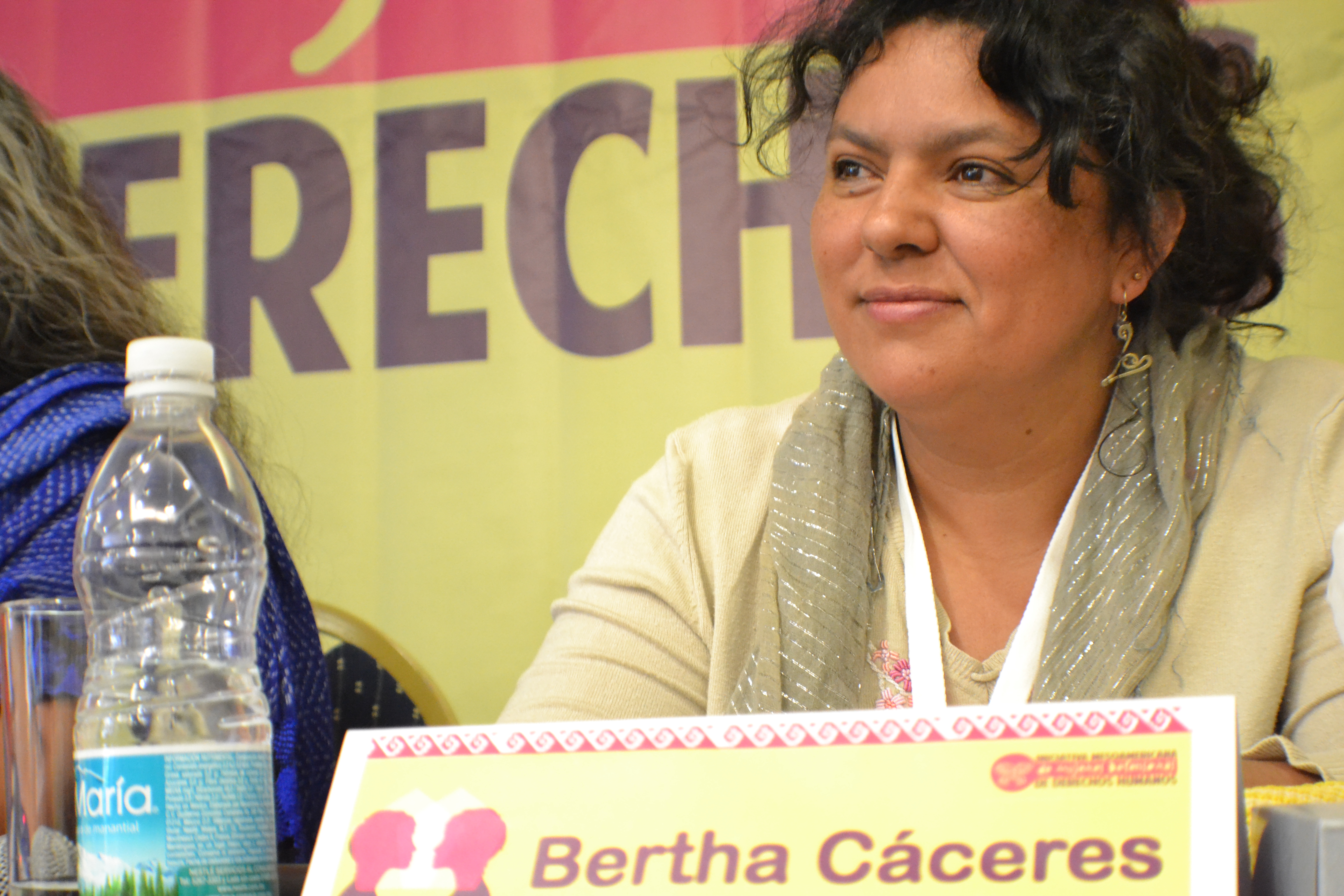Shaking Up: Strategy, Solutions and Sustained Impact
Within each Cycle we offer Key Ideas and Tools to support you wherever you are in your movement-building journey. Are you just starting out or are you in the heat of a shaking-up moment? What is emerging in your context and what do you want to do? What capacity do you have? Have you thought about risks and safety? These Cycles can be used as a framework for movement builders—both experienced and new. So start collecting your tools and store them in your We Rise toolkit.
Shaking Up is about mobilizing power for impact. Oriented by our animating vision and agenda, we strategically act with allies to make lasting change in policy and decision- making, shift social norms and protect and strengthen our communities.
-
Institutionalizing Gains, Transforming Power Strategically using our power to impact governance and democratize decision-making. Using advocacy, elections, direct action and other means, we reshape policies, practices and laws and transform power relationships.
-
Imagining and Creating Just Societies It’s as important to imagine the world we want, the communities we want and the organizations we want, as it is to understand and analyze problems and contexts. This enables us to not only envision change, but also to eradicate structures that perpetuate inequality and develop new structures that support our vision.
-
Amplifying Our Vision/ Shaping Culture Producing and strategically communicating cultural and political content that shapes the public conversation, promotes inclusive and positive social norms and supports our change agenda.
-
Combining Grassroots and Institutional Strategies Skillfully expanding and leveraging a web of relationships, working inside and outside formal decision-making, to advance and sustain our change agendas.
-
Building and Regenerating Movement Leadership Building and regenerating Movement Leadership centers on the on-going development of effective, collaborative and feminist leadership. It requires reconceptualizing traditional patriarchal forms of leadership and creating opportunities for new leadership to emerge.
-
Collective Protection and Safety Recognizing that our success increases the risks of backlash, particularly for women activists and other marginalized groups, we work to develop holistic forms of protection that encompass personal safety and collective security. We work proactively to combine self-care, mutual support and community protection strategies with changes in policies and social norms to eliminate threats and impunity with the goal of assuring the safety, wellbeing and human rights of activists.
-

INSTITUTIONALIZING GAINS, TRANSFORMING POWER
Institutionalizing Gains, Transforming Power is about strategically building and using our power to create and maintain deep and lasting change - in policies, in laws, in budgets, in institutions, in community practices and culture, in decision making itself. Through sustained organizing, advocacy, electoral interventions, direct action, cultural work and other movement building efforts, we work to permanently transform power relationships.
+ Read MoreThis is long term work. If we are clear about our goals, each step we take, each seed we plant, is guided by our vision of transformative change. Along the way, transformation also requires building alliances, revitalizing the social fabric of our communities and movements, advancing social and political priorities that matter for our lives, remaking political leadership and changing attitudes and social norms.
Transforming power is about transforming what is possible. As LaTosha Brown of Black Voters Matter noted, commenting on their historic electoral victories in 2021; "The work wasn’t overnight. It has been an ongoing process for more than a decade. The way I talk about community power is like electricity: Thomas Edison didn’t create electricity in the purest sense; what he created was a conduit to organize the energy and direct it. It was already there. That’s the same way I see organizing: We’re not creating power; the power is already there. This outcome in Georgia is a result of deep-seated organizing. It works. While I do certainly believe that Black folks, particularly Black women, were at the vanguard, we weren’t leading this by ourselves. There is a multigenerational, multicultural coalition that is rising up in the South and is really going to transform it."
Transforming power is complex and requires multiple strategies. As we know, systemic inequality leads to injustice in basic needs, such as healthcare, housing and access to justice. While it is clear that we must work to develop better policies, we must also build a path to their adoption, implementation and institutionalization. Often the policy process is so dominated by a narrow elite that our issues and proposals are blocked from public debate.
Climate change is a case in point. Powerful interests like the fossil fuel industry continue to do everything in their power to prevent meaningful solutions from reaching the agenda. They lie about and suppress science, mislead people, fund elected officials to buy their support, and get state militaries and police to protect their infrastructure. To get our issues on the agenda, we need multi-prong strategies including research, savvy communications and organizing, legislative and electoral efforts, direct action- that together build our power and push our concerns into public conversation.
Campaigning with clever slogans and a policy agenda is important, but insufficient if it is not accompanied by deep and broad grassroots organizing. With the rise of NGOs, there has been an overreliance on one-dimensional approaches to change that focus almost exclusively on very visible aspects of power, such as laws, policies and governmental institutions. These approaches usually promote technical solutions and short-term advocacy gains, but sometimes neglect the work to build the necessary movement power to make and sustain change.
Failure to understand power puts our movements at risk of missing opportunities and making poor strategic choices. Ignoring power can be dangerous for activists who underestimate the potential backlash when entrenched interests are challenged. Women and LGBTQI+ activists understand these risks politically and personally. Extraordinary gains in women’s rights around the world in the last decades provoked powerful, well-organized and frequently successful conservative efforts to systematically roll back our gains in many countries. In some countries, these forces have succeeded in re-imposing and “normalizing” a traditional view of women and gender, and institutionalizing forms of control over bodies, gender roles, sexuality and basic freedoms. Women activists know that a deep transformation in how society understands gender and gender roles is essential to assure lasting gains.
As activists, we are always searching for more effective means by which to engage and transform power to address the issues we care about. When we understand the complexities of power, we can more easily identify cracks and contradictions within our governing systems that can serve as potential entry points for change. For example, excessive increases in the cost of higher education and students’ growing debt burden in many countries has sparked action, such as the Fees Must Fall movement in South Africa and the National Campaign Against Fees and Cuts in the UK. These campaigns mobilized street protests and social media campaigns to pressure decision-makers and though they have had important gains, the student activists recognize that unless they alter the overarching structure—a consumer-oriented, privatized model of education—long-term transformative change will not be achieved. To get the issue into the public conversation, the movements must build alliances with others concerned about consumer models of healthcare and other essential services.
Understanding how different forms of power interact, and what that means for strategy and success, requires a close analysis of the overlapping dynamics of visible, hidden and invisible power dynamics (See JASS power analysis). We then must develop strategies to build transformative power capable of challenging social inequity and any use of power to oppress, dominate and exclude. Strong models for change build on power within oneself, power with others and a vision of change, what we call power for, which together create a formidable combination that inspires people to act. We have found that to guarantee long-term transformation, groups need to have sustained strategies to challenge and transform power so we can achieve and protect our vision of justice, peace and freedom.
HERRAMIENTAS PARA INSTITUCIONALIZAR LOGROS Y TRANSFORMAR EL PODER
-
Everjoice: Without a sense of self, without a sense of rights, without a sense of, you know, ‘this is what I’m entitled to as a human being’, you’re not going to move… I think it’s important to recognize that once that power has been unleashed, and women begin to find each other, it is just amazing how unstoppable that becomes.

-
 Jane: The oppression that we experience arises not only from the state or as visible or formal power, but also as it becomes a convergence or consolidation of invisible and shadow power, such as drug cartels of the state, culture, beliefs and norms that are promoting male power and other forms of domination. To change this, you need to change structures, and to change structures, you need sustained efforts over time – that’s why you need institutions. If you solely rely on individuals and one-time efforts, then it’s unlikely that it’s going to change structures.
Jane: The oppression that we experience arises not only from the state or as visible or formal power, but also as it becomes a convergence or consolidation of invisible and shadow power, such as drug cartels of the state, culture, beliefs and norms that are promoting male power and other forms of domination. To change this, you need to change structures, and to change structures, you need sustained efforts over time – that’s why you need institutions. If you solely rely on individuals and one-time efforts, then it’s unlikely that it’s going to change structures. -
Patricia: The importance of public policies and institutionalization mostly resides in giving a legal frame that helps legitimize and visibilize women’s needs for these changes. On the other hand, that the State recognizes its obligations to comply and respond to women’s demands for rights and protection.

-
 Joanne: It’s an upward-downward circular link; often, it’s from grassroots organizing that one identifies the need for a policy change. In the best of circumstances, grassroots organizing adds directionality so as to organize around issues such as home-based care, use of water resources, and local government. Who knows better than the people who are directly affected the kinds of policies that are needed to either accelerate or prevent certain things from happening? When organizing involves working with local communities, it allows people to undertake their own systems’ analysis, thus leading them to become influential policy actors by proposing policies.
Joanne: It’s an upward-downward circular link; often, it’s from grassroots organizing that one identifies the need for a policy change. In the best of circumstances, grassroots organizing adds directionality so as to organize around issues such as home-based care, use of water resources, and local government. Who knows better than the people who are directly affected the kinds of policies that are needed to either accelerate or prevent certain things from happening? When organizing involves working with local communities, it allows people to undertake their own systems’ analysis, thus leading them to become influential policy actors by proposing policies. -
Everjoice: You have to dig a little deeper and understand the journey these women of our Bodies Our Lives (a Malawian community-based women’s health justice network) have travelled. Yes, they might still be living largely in poverty from a material base, but in terms of the level of personal empowerment they have, the collective power they have, and the way that they have been able to shift a national policy conversation – it is something that you probably will never see written about anywhere, because of course it was done by women from villages who are not technical experts, who didn’t have data, but who only had their lived experience and their own power to go on. For me, that’s the story that needs to be told.

-
 Jane: The challenge now is overcoming the difficulty of generating transformative power given the overwhelming nature of the different forms of power. And the resources we have for building our institutions are so inadequate to confront these powers that in many instances, we find ourselves confined in trying to open little crevices or spaces of change within systematic and systemic forms of oppression.
Jane: The challenge now is overcoming the difficulty of generating transformative power given the overwhelming nature of the different forms of power. And the resources we have for building our institutions are so inadequate to confront these powers that in many instances, we find ourselves confined in trying to open little crevices or spaces of change within systematic and systemic forms of oppression. -
Patricia: Being able to recognize and make visible our concrete achievements as people, as groups, as organizations and as societies gives us strength and reminds us that we can transform reality. That is why it is so important to acknowledge each of our achievements, including those related to longer-term objectives. In the midst of situations as complex – and often adverse – as those we are experiencing, this acknowledgment reminds us that we have the capacity to transform power relations, that we have the ability to decisively influence our States in some cases, and to influence decision-making at a general level. But to do so, we must think about the short and long term. We must understand and analyze our context and the dynamic power relations that are at play, so that we can also assess each action we carry out in terms of its consequences. Every action has consequences, and we need to be conscious of this deeper contextual analysis at the same time that we are assessing the daily reality and circumstances in order to determine how to respond.

-
-

“Another world is not only possible, she is on her way. On a quiet day, I can hear her breathing.”―Arundhati Roy IMAGINING AND CREATING JUST SOCIETIES
Imagining and Creating Just Societies is about the importance of eradicating structures that perpetuate inequality and developing new structures that support our vision. It’s as important to imagine the world we want, the communities we want and the organizations we want, as it is to understand and analyze problems and contexts.
+ Read More“We are an army of dreamers, and that's why we're invincible.” Sub-Commander Marcos, Zapatistas
Imagining new ways of living together and living on the planet begins as dreaming, but eventually leads to concrete proposals, ideas and worldviews. We actively build our transformational visions every day by changing the way we treat one another and organize together. Throughout history, social movements have created visions of new worlds. These experiences teach us a lot, from small-scale utopias to liberated or autonomous zones where communities seek to live by a different set of structures, rules and values. Indigenous peoples have long offered a different worldview, or cosmovision, to live in harmony with nature and continue to lead today. Activists and researchers are collaborating to create more fair and humane models.
Creating change requires understanding and challenging what’s wrong, and devising strategies to imagine and construct new models. Collectively imagining an end to inequality and injustice is essential to building alliances and coalitions and generating the hope and energy that keeps change-makers and movement activists going for the long haul. Imagining new futures helps us to define the values and principles at the core of our agenda—values that we embed in how we organize ourselves in our day-to-day practice, not only in our proposals for the future.
A clear vision for the future is also the basis for working with many allies to develop the political and policy proposals that would bring our new models to life. Those proposals are the basis for our demands for change. They inspire and mobilize other people to join our cause, including many people who do not think like us. We need to offer hope, possibility and concrete demands that carry us toward a new reality—one where we can feel powerful, not powerless.
For example, faced with a rise in exploitative resource extraction projects, indigenous and rural women draw on their communities’ culture of resistance and the Mayan cosmovision to defend their lives, land and territory. Lolita Chavez, an indigenous leader of the Consejo de Pueblos K´ichés (CPK) located in the department El Quiché in Guatemala, explains their sustaining worldview; “We have a different way of thinking from what has been called 'development' as the accumulation of wealth or imposing of other people’s idea of what is ‘better’. Rather, we are talking about a harmonic way of life and of being with nature. For us, the earth doesn’t belong to any particular person. Instead, both men and women are seen as ‘one living being’ with no private properties or divisions. To defend our territory is to defend every aspect of life. Mother earth should not be bought or sold—it should be respected and defended, and we say NO to transnational companies and YES to life.
Imagining, recovering certain traditions and building new models must always be embedded in our organizing and popular education. In this Resource Kit, we offer a wide range of methodologies with ideas for using words, skits and other creative dynamics that tap into people’s ability to imagine change that confronts the structures and situations that create injustice. These imaginings form the basis for defining the principles to guide how we organize. For example, if we want relations that respect dignity and seek inclusion, that value care and sustaining life, that deal with conflict in an open respectful way, that promote reciprocity and solidarity, how we organize, lead and build organizations should reflect those practices. We can’t wait until we have the perfect future; we have to build it every day in how we work.
Once we have a grasp of the causes and consequences of the problems we seek to address and an animating vision of what we want, we work with like-minded organizations, policy advocates and academics, to clarify our demands and specific policy proposals. Policy proposals alone will not achieve transformation. It’s important to continuously define our vision and remember the path we have to travel as we organize on specific issues.
Tools for Imagining and Creating Just Societies
On-The-Ground Conversation…
Zephanie Repollo, Alexa Bradley, Orfe Castillo, Daysi Flores, Lisa VeneKlasen and Shereen Essof reflect on why imagination and envisioning alternatives is vital for fueling our hope and planting seeds for the future we want to bring to life.
-
Zephanie: What really inspires me is women’s courage to continue to dream, and their roots in their history, that they are very aware of the roots that inspire them to continue and build a legacy for the next generation.

-
 Alexa: Imagination is the most important tool against despair and resignation. Because if we just elaborate on the problem, this is how bad it is, that only motivates a small number of people. Most people will feel like they can’t do anything. Hope and imagination on the other hand are very attractive; they can be playful, emotional, can embolden people to act.
Alexa: Imagination is the most important tool against despair and resignation. Because if we just elaborate on the problem, this is how bad it is, that only motivates a small number of people. Most people will feel like they can’t do anything. Hope and imagination on the other hand are very attractive; they can be playful, emotional, can embolden people to act. -
Zephanie: I think it’s really important for us to envision a future, what the future would look like. That is our inspiration, why we do the things we do right now. In their everyday lives, the women we work with find alternatives and organize to demand accountability of the government, and it’s important for those to go hand-in-hand because our survival is not an alternative. These pieces go alongside each other, finding alternative solutions and finding smarter ways of organizing, where women push and demand services for people, and to uphold their basic human rights.

-
 Alexa: The versions of ourselves and the versions of reality that are shown to us are extremely suffocating. Some of those “realities” embody white supremacy, class supremacy, male supremacy. Therefore, if we don’t actively cultivate our imaginations to imagine ourselves differently—our sense of community, economics, our relationship to the environment, our relationship to one another—we allow the oppression to stay with us and weigh us down.
Alexa: The versions of ourselves and the versions of reality that are shown to us are extremely suffocating. Some of those “realities” embody white supremacy, class supremacy, male supremacy. Therefore, if we don’t actively cultivate our imaginations to imagine ourselves differently—our sense of community, economics, our relationship to the environment, our relationship to one another—we allow the oppression to stay with us and weigh us down. -
Daysi: Building alternatives is not just to avert enduring what we endure. It is also necessary to build alternatives that value what we were not taught to value, that do not jeopardize the future of humanity or the generations that follow us, and to live happily in the present. Trying to build and imagine a world that responds to our inner world, to all that universe and that cosmos that we have within us, connected with the cosmos of others, and built above all from love and care, is transcendental.

-
 Zephanie: I come from the environmental movement, before I came into JASS, and sometimes we in the environmental conversation need to remember that we need to root our dreams and vision centering care, because it is intersectional. It doesn’t just mean moving to 100% renewable energy, because this has, by experience, damaged many indigenous communities. Renewable doesn’t mean sustainable. Envisioning the future means involving those most impacted.
Zephanie: I come from the environmental movement, before I came into JASS, and sometimes we in the environmental conversation need to remember that we need to root our dreams and vision centering care, because it is intersectional. It doesn’t just mean moving to 100% renewable energy, because this has, by experience, damaged many indigenous communities. Renewable doesn’t mean sustainable. Envisioning the future means involving those most impacted. -
Orfe: Human rights movements and defenders have a commitment to refuse to preserve the current situation. These lights that appear by imagining different futures and more egalitarian and just societies are what sustain us in our spaces of struggle, which can become frustrating and painful. We always keep “the possibility” in our sights. The convergence of many persons, our ideas of change, and the mobilizations for different causes in many territories are all nourishing changes that are taking place and that are going to take place. Our daily practice of horizontal and respectful relationships inspires us to continue building, often with all the obstacles, but also with all the joy generated by the coming together of different worlds.

-
 Lisa: What inspires change is not only the capacity to imagine an alternative to violence and inequality, but to bring it to life in the day-by-day construction of alternative communities and ways of leading and acting in the world.
Lisa: What inspires change is not only the capacity to imagine an alternative to violence and inequality, but to bring it to life in the day-by-day construction of alternative communities and ways of leading and acting in the world. -
Daysi: Generating alternatives allows us to realize that we have the right not only to be, but also to be happy. In movements this is an especially important issue, because many movements are generated solely in response to a specific problem that we have experienced. Building alternatives makes us show that another world is possible, that other realities are possible, and that we can live, sustain and care for life from another perspective, not only from the one imposed on us.

-
 Alexa: We have to embrace the creative exploration of inventing our way forward. Sometimes we will succeed, and the results will be amazing, and sometimes, like any creative work, not every creation will be a masterpiece. You may write the first three lines of a poem and then later realize, those three lines weren’t good, but they moved the poem somewhere, and the next lines were even better.
Alexa: We have to embrace the creative exploration of inventing our way forward. Sometimes we will succeed, and the results will be amazing, and sometimes, like any creative work, not every creation will be a masterpiece. You may write the first three lines of a poem and then later realize, those three lines weren’t good, but they moved the poem somewhere, and the next lines were even better. -
Shereen: We need to both make the means and dream the destination of a feminist future that is more just and equitable, more beautiful and joyful, and more whole.

-
-
"Let us teach both ourselves and others that politics does not have to be the art of the possible...but that it also can be the art of the impossible, that is the art of making both ourselves and the world better."—Vaclav Havel, President of Czechoslovaki AMPLIFYING OUR VISION/SHAPING CULTURE
Amplifying Our Vision/Shifting Culture is about producing and strategically communicating cultural and political content that inspires people, shapes the public conversation, promotes inclusive and positive social norms and supports our change agenda.
+ Read MoreAll movements that aspire to social transformation engage and impact culture. Through diverse strategies, including the arts, social media, cultural production, education and public institutions, movement activists work to communicate values, stories, norms and ideals that reflect their visions of change or to question and "de-normalize" ideas and cultural practices that deny rights and freedoms. When movements begin, they already have a core set of adherents who share a vision, but it is when those movements begin to influence and inform the thinking of a broader circle of people, when the arts and cultural institutions absorb and reflect their vision, and when social norms begin to shift that we know the movements are gaining social power.
“We are struggling for the heart and soul of community – community built on a commitment to the common good and cooperation ... upheld by solid bonds of human relationships that respect diversity and human rights, a weave of justice, woven with multiple threads of power and people.” Mexican and Central American Women Leaders, JASS Movement-Building Institute, September 2006
Real transformation cannot take place without cultural change. Cultural change takes on the “invisible power” of ideologies and beliefs that oppress and control by offering a vision and beliefs that are more compelling and freeing. Beliefs and ideas—subversive, passionate, liberating, radical, heartfelt, humane and bold—have an extraordinary capacity to unleash courage and creativity; at the same time, creativity is a powerful force to reaffirm and spread ideas. Movements gain momentum by both tapping into and expanding people’s imaginations, inspiring change and action on personal and collective levels. While cultural change should not be mistaken for political change that involves structural shifts in policy, laws and institutional practices that embody the power relationships of the society, it is vital to fuel and sustain that deeper change with celebratory, imaginative and defiant expressions of our vision.
Changing social norms and inspiring social imagination begins in the simple and important ways we take our knowledge, stories and identity back from a culture that has tried to shape and distort how we see ourselves and keep us under its control. Using storytelling and inviting participants to question “reality” and ask “But why?” opens minds to challenge taboos, break silences and engender new ideas.
JASS members have found many ways to amplify the voices of the women we work with—radio programs, "write-shops," speak-outs, concerts, theater, testimonials, learning exchanges, blogs and articles. Each contributes to cultural and knowledge production that affirms our truths and raises social awareness.
Sometimes this work is fun and provocative, like gathering hundreds of women together in our Caution: Women Crossing the Line tee-shirts or singing and dancing together. Sometimes, it’s simply offering a safe space for women to talk about bodies, sex and sexuality, casting off shame and stigma. And sometimes, it is the painful but important meetings we’ve held in which women speak out about their experiences as women human rights defenders. Ultimately, we work so we can all bring our experiences, demands, and visions for change to the center from the margins so we can shape new realities going forward.
Tools for Amplifying Our Vision/Shaping Culture
ON-THE-GROUND CONVERSATION…
See what Amina Doherty, Alexa Bradley, Kunthea Chan, Patricia Ardón, Sophorn Yit, Rosa Chavez and Shereen Essof have to say on the importance of challenging and shaping social norms to make change and build movements.
-
Shereen: Across time, women have had the distinct ability to combine popular culture and feminism to convey visions of transformation and create wellbeing for our communities and our planet… through music and words, to find the collective courage to continue to take action against injustice.

-
 Amina: Creating change first requires recognition that society’s structures and institutional practices are unequal and unfair for many people. I see art and creative expression as a really important way to shape social norms, and here at JASS we call that the Hearts and Minds approach.
Amina: Creating change first requires recognition that society’s structures and institutional practices are unequal and unfair for many people. I see art and creative expression as a really important way to shape social norms, and here at JASS we call that the Hearts and Minds approach. -
Rosa: In art you can create and recreate powerful non-hegemonic narratives that can touch very deep fibers of existence that are not reached by other types of language. The value of speaking and expression is one of the ways to use and regain our power as women. Emancipatory art has accompanied struggles, mobilizations and transformational moments throughout the history of peoples and movements.

-
 Alexa: We have to understand what the set of dominant ideas or social norms are that legitimize the current reality. For instance, in global development, when megaprojects such as dams trump the rights of indigenous and rural peoples, ideas about “progress” and “backward people” are used to legitimize the practice of pushing them off their land. For that reason, we can’t just say “no” to that dam; we have to put forward a different set of beliefs that challenge its legitimacy.
Alexa: We have to understand what the set of dominant ideas or social norms are that legitimize the current reality. For instance, in global development, when megaprojects such as dams trump the rights of indigenous and rural peoples, ideas about “progress” and “backward people” are used to legitimize the practice of pushing them off their land. For that reason, we can’t just say “no” to that dam; we have to put forward a different set of beliefs that challenge its legitimacy. -
Patricia: I think there have been changes that many times aren’t visible, like there are fellow men in our struggles who have also assumed women’s causes as part of peoples’ causes – not that many, but there are a few. But I think that in general, movements for land and territory and indigenous peoples’ movements in many regions of the world, and in Latin America in particular, are very important not only in defending their rights, but also in proposing a shift of paradigm in terms of relationships between human beings and nature. And this can touch norms that are very accentuated in our societies.

-
 Kunthea: In Cambodia, and I’m sure in many other countries, society dictates that women should stay at home to take care of the kids and support the family, whereas men can become involved in politics as they wish, since ‘politics are dirty; politics are only for men’. Because we activists defy that norm, we receive a lot of pushback.
Kunthea: In Cambodia, and I’m sure in many other countries, society dictates that women should stay at home to take care of the kids and support the family, whereas men can become involved in politics as they wish, since ‘politics are dirty; politics are only for men’. Because we activists defy that norm, we receive a lot of pushback. -
Sophorn: Like many Cambodian women, I am performing double tasks—as a homemaker and as an activist/development worker. In recent years, Cambodian women have been slowly changing the political landscape in the country; people say we are no longer the meek and submissive housewives who have no say on social affairs. Cambodian women are now taking the lead on discussions on social and political issues – not only on women’s rights but on the rights of all sectors – particularly the grassroots.

-
 Amina: Without culture change, there is no social change, so it’s really important to use all of the tools we have at our hands whether it be through media, music, art, film, to think about the ways we want to change norms.
Amina: Without culture change, there is no social change, so it’s really important to use all of the tools we have at our hands whether it be through media, music, art, film, to think about the ways we want to change norms.
-
-
"The purpose of our direct-action program is to create a situation so crisis-packed that it will inevitably open the door to negotiation."—Martin Luther King COMBINING GRASSROOTS AND INSTITUTIONAL STRATEGIES
Combining Grassroots and Institutional Strategies is about working inside and outside formal decision-making, skillfully expanding and leveraging a web of relationships to advance and sustain our change agendas. Grassroots strategies include community organizing, street and virtual mobilizations, assemblies, petitions, media work and cultural events. Institutional strategies include elections, lobbying federal, state and municipal legislatures, negotiating demands and implementation with officials, filing lawsuits and leveraging political influence in formal decision-making spheres.
+ Read MoreThe leadership and tactics employed for institutional strategies are different from those employed for grassroots strategies, but the differing strategies should never alter your principles and vision. Activists often tend to make an ideological distinction between institutional strategies as “reformist” and grassroots strategies as “revolutionary”. Many grassroots activists argue that institutional strategies end up diluting or coopting our issues, while advocates working with institutions argue that nothing will change unless we engage with policymakers despite imperfect politics. The history of social movements and our experience over the years clearly demonstrate the need for both grassroots and institutional strategies and today’s context calls for a fluid combination of the two. In fact, almost every movement that we’ve known employs a combination.
“We want feminists — women who care about the rights of other women and who are prepared to rock the patriarchal boat — to be in leadership positions and to be there when the deal is made.” - Everjoice Win
Grassroots strategies enhance people’s power and leadership and generate experiential analysis and demands from the people themselves, while institutional strategies seek spaces in which to advance those demands and begin to translate our visions into specific policy change. Both, in that sense, are potentially transformational. Institutional strategies are key to making inroads in translating our visions into concrete policies, but our justice demands and agendas are unlikely to make it to the public policy agenda, let alone turn into policy and legal changes, without the pressure and exposure created by direct actions, mobilization and smart use of media. The grassroots strategies increase our base and thus our ability to make our issues visible and powerful and reach the policymaking sphere.
“We have to contest power in all arenas. As movements, we have to contest power and we need to do it in different ways, from different fronts and with a diversity of actions.” - Sandra Moran
It takes more than data, evidence and a persuasive argument to get social, economic or environmental justice issues and policy proposals onto the public agenda. Unless those in power feel that a policy serves their political self-interest or that the costs of inaction are too great, they are unlikely to move ahead. This isn’t a cynical reading, it’s a realistic assessment of how politics and power operate. Economic and political elites control policy agendas and prevent new issues and voices from entering and shifting the policy discourse at all levels. Even when our issues and proposals are taken up, without steady outside pressure, they can be coopted by decision-makers who grandstand behind rhetoric and stall concrete action. Often our policy demands reflect a completely different logic from that of policymakers, such as proposals on climate change or peacebuilding that call for a radical re-think of economic and military policy. Grassroots strategies are essential to redefine, claim and create room in the policy agenda, while allies closer to decision making can bring attention and credibility to our issues and increase the likelihood of their adoption.
Once our issues are taken up by formal decision-makers, grassroots organizing must maintain pressure on these actors and highlight the political costs of inaction and the benefits of accepting our demands. Research shows that organized communities play a vital role in achieving government responsiveness and accountability. Women’s organizing in particular is key to lasting change.
At the same time, we must beware of the co-optation of the language and intent of our agendas. In the past, women’s rights agendas have been used to justify military interventions, “green energy” solutions have kept the fossil fuel industry intact, and corporate responsibility strategies that have focused more on branding than true change.
There is no formula for aligning and choosing the right mix of institutional and grassroots strategies, because power is always shifting. However, some basic criteria help determine the best course of action. The first is to understand the political moment and what sources of power we have within it. Creative street tactics and social media campaigns combined with exposés and news releases that uncover hidden truths and abuses of power often generate political momentum and pressure on policymakers to take action. Institutional allies can guide us and ensure that our proposals make it into the decision-making spheres. Alliances with advocates and researchers who support and document our justice demands can be especially effective.
Second, the strategic interplay of institutional and grassroots strategies also demands that we understand the value of what each brings to the change process. This can be difficult in a political culture that values state power over people’s power and oftentimes official declarations over common truths. But the uncomfortable challenge of movement activism is exactly its power—to force paradigm shifts and bring new pressure to bear.
Moreover, the interplay between the two strategies creates important opportunities for mutual learning. Too often advocates with institutional experience speak on behalf of and represent others in ways that do not build skills, voice or power and are not always representative. It is vital that the people most affected by inequality and who will benefit most from positive action, speak and lead on their own behalf.
Another challenge comes from the “seduction of power.” It is easy to misread an invitation for engagement with decision-makers as a strong opening for change, and consequently to let up on grassroots pressure. An opportunity to participate, however, is rarely a win, –it’s just a first step. And it is always important to remain clear about your goals and be vigilant for possible cooptation.
To evaluate potential gains, we must differentiate between “invited spaces”, “claimed spaces” and “created spaces”. Invited spaces are those within which our participation is expected or at least allowed, but whose parameters and rules are controlled by others. These vary by context, but can include elections, legislative and public hearings. These spaces are always contested and disinclined to allow the entrance of new actors. Claimed spaces are those that movements strategically open up to their own purposes, such as neighborhood meetings and community organizations. Finally, created political spaces are spheres of autonomous political activity that allow us to create new models of interaction and freely develop new worlds.
Tools for Combining Grassroots and Institutional Strategies
ON-THE-GROUND CONVERSATION…
Hear what Lisa VeneKlasen, Adelaide Mazwarira, Orfe Castillo, Sibongile Singini and Anna Davies-van Es say about strategic alliances and partnerships that combine grassroots activism with partners and institutional advocacy inside the power structures and decision-making processes we want to influence—and when and why they can both be strategic.
-
 Lisa: To have a bigger impact on the issues and institutions that we want to change, to solve the problems we are trying to solve, we form alliances and partnerships. In Southern Africa, for instance, we realized that religious institutions perpetuate the shame and stigma women living with HIV/AIDS experience. And they were shaping the politics around HIV/AIDS. So we decided to partner with a progressive religious organization.
Lisa: To have a bigger impact on the issues and institutions that we want to change, to solve the problems we are trying to solve, we form alliances and partnerships. In Southern Africa, for instance, we realized that religious institutions perpetuate the shame and stigma women living with HIV/AIDS experience. And they were shaping the politics around HIV/AIDS. So we decided to partner with a progressive religious organization. -
Anna: The faith group we worked with was made up of religious leaders living with HIV/AIDS who, because of their social status and position, had relationships with government and high-level officials. They could bring a degree of credibility and attention to our agenda by virtue of who they were that we really needed. I won’t say it was easy, but the alliance really helped us move our demands.

-
 Lisa: These kinds of inside-outside collaborations are not easy. They mean working outside our comfort zone. I think one of the challenges for feminists is related to our unwillingness to work with different groups which hold different values. In truth, change is only possible with strategic partners, people that share your solution and your concern about the problem, but don’t necessarily share all your views. That is leveraging strategic partnerships for a wider and deeper reach. As another example, working now in Honduras to get justice for Berta Caceres, we are fast becoming allied with groups focused on the international banks. Those groups do not use the word "feminist" in anything they say or do, but we’re on the same page about what we want to accomplish. What’s always surprising is how much we learn from each other once we join forces.
Lisa: These kinds of inside-outside collaborations are not easy. They mean working outside our comfort zone. I think one of the challenges for feminists is related to our unwillingness to work with different groups which hold different values. In truth, change is only possible with strategic partners, people that share your solution and your concern about the problem, but don’t necessarily share all your views. That is leveraging strategic partnerships for a wider and deeper reach. As another example, working now in Honduras to get justice for Berta Caceres, we are fast becoming allied with groups focused on the international banks. Those groups do not use the word "feminist" in anything they say or do, but we’re on the same page about what we want to accomplish. What’s always surprising is how much we learn from each other once we join forces. -
Orfe: There is a level of relationship with multilateral human rights institutions that has been particularly useful in increasing the pressure on States that disregard the protection of women human rights defenders. These institutional actors contribute to building a narrative that acknowledges the work that women defenders do and helps others to understand who they are, what their contributions are, and why it is important -- not only for them and their movements, but also for society as a whole -- to care for them, protect them and demand adequate conditions for the human rights defense work that they carry out every day.

-
 Anna: Our Bodies Our Lives campaign has really held open a space for all women, so it’s driven by HIV+ women, who may belong to different affiliations such as support groups or other women’s rights organizations. There’s also been a clear strategy to bring in women from Geneva, which is the journalists’ network, and using that as an inside-outside strategy to be able to get press coverage of some of the campaign activities and demands.
Anna: Our Bodies Our Lives campaign has really held open a space for all women, so it’s driven by HIV+ women, who may belong to different affiliations such as support groups or other women’s rights organizations. There’s also been a clear strategy to bring in women from Geneva, which is the journalists’ network, and using that as an inside-outside strategy to be able to get press coverage of some of the campaign activities and demands. -
Adelaide: How do you make these decisions? How do you determine which partnerships will have strategic benefits?

-
 Lisa: I think this is why it is really important to do power analyses. You search deeper for information about the particular institutions, people, and decisions you want to change. And you find out about like-minded organizations with similar goals and key relationships or knowledge to bring.
Lisa: I think this is why it is really important to do power analyses. You search deeper for information about the particular institutions, people, and decisions you want to change. And you find out about like-minded organizations with similar goals and key relationships or knowledge to bring. -
Shereen: In Malawi, it was really about looking at what the opportunities were on the ground, and what it is we felt we needed to do specifically for campaign purposes and how it is that we could maximise our power to drive the agenda. And so, it's complex, because a number of things come together almost simultaneously, and it's difficult to pull out or separate one from the other because collectively they allowed us to build the momentum that ultimately led to the change.

-
 Sibogile: Working with partners is always powerful and having allies inside the Ministry of Health helped Our Bodies Our Lives (OBOL) campaign. If it were another organization that the Ministry did not know, they maybe would have done nothing. But the Ministry of Health said, “these women are powerful, let us do something otherwise they will tell the whole of Malawi what we are doing”.
Sibogile: Working with partners is always powerful and having allies inside the Ministry of Health helped Our Bodies Our Lives (OBOL) campaign. If it were another organization that the Ministry did not know, they maybe would have done nothing. But the Ministry of Health said, “these women are powerful, let us do something otherwise they will tell the whole of Malawi what we are doing”. -
Anna: When women who are the most affected by these decisions are in the middle of the advocacy, you can count on them keeping up the pressure from the outside on policymakers to deliver on their promises.

-
 Lisa: You have to figure out where the decisions are being made. In doing that, you’re going to come across groups you should probably partner with so that the inside strategies open opportunities for the constituencies with which we’re working. Aligning both inside and outside strategies is about ensuring that policy change will be implemented.
Lisa: You have to figure out where the decisions are being made. In doing that, you’re going to come across groups you should probably partner with so that the inside strategies open opportunities for the constituencies with which we’re working. Aligning both inside and outside strategies is about ensuring that policy change will be implemented.
-
-
"Confronting power is central to feminist leadership and movement-building. If we as women leaders replicate the practice of power over, how are we any different from mainstream male-stream practices of leadership?”—Shereen Essof BUILDING AND REGENERATING MOVEMENT LEADERSHIP
Building and Regenerating Movement Leadership is about the on-going development of effective, collaborative and feminist leadership, that consciously creates opportunities for new leadership to emerge. It requires fostering an organizational culture that is intentionally evolving and welcoming, and a commitment to growing movement capacity and longevity, not just individual leaders.
+ Read MoreFeminist leadership principles and practice have much to offer other movements. The basic principles are distributive leadership, collective decision-making, employing means congruent with our ends, non-violence and building power with and power to, rather than power over. A commitment to sharing and expanding leadership, with opportunities for training and learning while doing, fundamentally changes how we organize and how we lead change. Rather than placing an emphasis on individual leaders, feminist movements strive for an organizational culture of collective and collectively- accountable leadership.
Regenerating leadership is not only about investing in a younger generation, it’s about fully incorporating all members of the organization and their diverse skills and potentials into the work and assuring that no one remains on the margins. It’s also about making sure that current leaderships continue to learn and evolve in their roles, while avoiding rigid leadership structures.
“Patriarchy, reflected through all the structures and institutions of our world, is a system that glorifies domination, control, violence, competitiveness and greed. It dehumanizes men as much as it denies women their humanity. So, we need leadership that will explore and expose these links and challenge patriarchy. The only leadership that does this is feminist leadership.” Peggy Antrobus
Feminist leadership can be best developed in safe, autonomous spaces. But feminist leadership principles and practices must also be brought to mixed organizations to change top-down leadership models. It isn’t enough that women hold leadership roles, we have to avoid reproducing authoritarian leadership patterns that reinforce inequity and undermine our efforts to make fundamental change. To achieve our vision of social transformation—deep democracy, freedom, dignity, and wellbeing—feminist leadership has a critical role to play in many grassroots movements.
Tools for Building and Regenerating Movement Leadership
ON-THE-GROUND CONVERSATION…
In this conversation, Tiwonge Gondwe, Carme Clavel, Marusia López Cruz, Daysi Flores Amina Doherty and a Philippine woman activist (who chose to stay anonymous for safety reasons) talk about their ideas and experience with building and renewing feminist leadership.
-
 Marusia: For me, feminist leadership breaks with the idea of individual leadership. It questions the idea that there must be single leaders that dictate what the whole movement, the whole organization, has to do. A feminist leadership builds by joining and weaving the voices, abilities and knowledge of all the people from the organization or community. So, for me, feminist leadership first and foremost means collective leadership.
Marusia: For me, feminist leadership breaks with the idea of individual leadership. It questions the idea that there must be single leaders that dictate what the whole movement, the whole organization, has to do. A feminist leadership builds by joining and weaving the voices, abilities and knowledge of all the people from the organization or community. So, for me, feminist leadership first and foremost means collective leadership. -
Tiwonge: My first time to speak in public, to speak at a meeting, I was like ‘Wow! Am I me? Or someone else?’. And from that, the fear which I had had, all went away. So, this has changed me because I know I can speak everywhere, I can participate everywhere. I couldn’t have self-confidence at first, but now I have self-confidence, and I say ‘Yes, I’m good at building something’, I can say ‘Ohhh, that is my contribution.’ I’m seeing myself as a powerful woman, and a strong woman, for that matter.

-
 Amina: When we think and talk about feminist power and leadership, it’s important to understand that feminist leadership is constantly changing and shifting, and allows voices from across the spectrum and at all levels to participate and engage. Therefore, it’s not centralizing a top-down approach to leadership, but rather, something that is much more horizontal, and that allows for voices across a range of spectrums to feed into it.
Amina: When we think and talk about feminist power and leadership, it’s important to understand that feminist leadership is constantly changing and shifting, and allows voices from across the spectrum and at all levels to participate and engage. Therefore, it’s not centralizing a top-down approach to leadership, but rather, something that is much more horizontal, and that allows for voices across a range of spectrums to feed into it. -
Marusia: It’s a leadership that questions the historic power inequality between men and women, and carries out affirmative action to allow women to regain the power society has taken away from them, to recover the voice society has taken away from them. Feminist leadership allows women to recover their power, and be able to use this power for a collective struggle, for collective leadership.

-
 Carme: It’s important to refresh and regenerate feminist leadership, so that we don’t always see the same faces. I think that's important because when one is in a leadership position, there is always learning, there are strategies you have to carry out, but I think it’s good that in different moments we occupy leadership differently. Depending on the moment in the work we and the organization do, we will need different kinds of leadership.
Carme: It’s important to refresh and regenerate feminist leadership, so that we don’t always see the same faces. I think that's important because when one is in a leadership position, there is always learning, there are strategies you have to carry out, but I think it’s good that in different moments we occupy leadership differently. Depending on the moment in the work we and the organization do, we will need different kinds of leadership. -
Dina: I bring in young feminists into the work of renovating leadership by showing them that I believe in their abilities, making space for them to develop themselves and their leadership. I also remind my colleagues who are seniors to continue to encourage the younger ones to move and not see them as rivals. On top of that it actually strengthens the feminist movement, so we become an intergenerational feminist movement that has an energy that will continue to grow because of the young feminists.

-
 Kunthea: When leadership is rotated, the process means sharing the way you build democracy into the process, and also illustrating feminist leadership in that you understand your power and your privilege, and you understand when you should step up and when you should step back. That is the way we try to form new leadership for young people through the processes we are working and organizing with them.
Kunthea: When leadership is rotated, the process means sharing the way you build democracy into the process, and also illustrating feminist leadership in that you understand your power and your privilege, and you understand when you should step up and when you should step back. That is the way we try to form new leadership for young people through the processes we are working and organizing with them. -
Daysi: The regeneration of feminist leadership in movements is an ongoing need that occurs in different ways, because it is not only about the construction and recognition of emerging leaderships, and other ways of doing politics -- it is also about the acknowledgement and appreciation of history. The oxygenation of movements comes from a two-way openness and the versatility, both in people who are starting out -- who do not necessarily have to be young people -- and people who have dedicated their lives to this construction. There must be openness to be able to open spaces, dialogues, even intersections and to be able to find oneself. Movements are communities, and there must be room for everyone. For this, it is necessary to recognize that leaderships are diverse and that each of these leaderships is important. When building political force, when building movements, every one of those skills and those potentialities is necessary. and important.

-
 Philippine woman activist: We are more complex than we are the same. We are all mixed up – never just by class, never just by gender, never just by age. And age should not be a hindrance. When the ‘young once’ work with the ‘young ones,’ they get energized and continue. Likewise, the younger ones learn and they too persevere.
Philippine woman activist: We are more complex than we are the same. We are all mixed up – never just by class, never just by gender, never just by age. And age should not be a hindrance. When the ‘young once’ work with the ‘young ones,’ they get energized and continue. Likewise, the younger ones learn and they too persevere.
-
-

“A movement-building approach does more than create webs for self-protection. It equips women defenders with the collective power to amplify their voice and engage more effectively with governments to change the norms that impact them.”—Lisa VeneKlasen COLLECTIVE PROTECTION AND SAFETY
Collective Protection and Safety means assuring our individual and collective wellbeing to the highest degree possible and being free from threats and attacks in women’s daily lives and organizing. Protection should not be seen merely as a shield or series of defensive actions. Although as women activists and human rights defenders we face attacks, we need a more holistic concept of protection to assure our safety and that of our families, organizations, communities and planet. This includes a broad range of tools and activities, including strategies for community protection, support and training for self-care and changes in policies and social norms to eliminate the sources of violence and injustice. In all these areas, we proactively work to secure the safety, wellbeing and human rights of activists.
+ Read MoreSince 2009, many organizations and donors have sought to respond to the criminalization of and attacks on human rights defenders (HRDs). Since that time, resources for protection have multiplied. Still, the scale of attacks is growing and becoming increasingly complex. Violence comes from state and non-state actors, often in collusion with each other. Criminalization and harassment tactics generate fear and fatigue for defenders and organizations, by trapping them in lengthy legal procedures and forcing them to defend themselves from criminal accusations. These strategies against defenders serve to divert resources away from critical human rights efforts, to weaken organizations, and ultimately, to silence activists.
Human rights non-governmental organizations (NGOs) seem ill-equipped and slow to respond to these "on the ground" realities, and investments in protection cannot keep pace with the problem. Though crucial, emergency funds for temporary relocations of individual defenders and for other security interventions are not sufficient to respond to the nature and scale of violence faced by HRDs, especially by women human rights defenders (WHRDs). Many programs to counter criminalization and to sustain or strengthen defenders and their organizations focus primarily on policy and legal advocacy. While policy and legal cases are vital, implementation is stymied by lack of resources and political will. Indeed, policy advances are limited, if not accompanied, by the sustained work of grassroots movements and local-to-global organizing to engage public opinion and continuously pressure state institutions to implement measures to protect defenders and to ensure freedom of expression.
Effectively addressing violence against HRDs and equipping defenders to sustain human rights efforts in risky environments requires alternative strategies to prevent violence and to protect defenders on a larger and more sustained basis. Based on JASS’ experience in the Mesoamerican Women Human Rights Defenders Initiative—a collaborative effort between JASS and five organizations—and in other regions, movement-building that invests in long-term alliance-building with and among defenders across issue, sector, and identity is a promising solution that equips defenders with the tools necessary to protect each other and to use the power of their numbers for an even stronger voice on human rights.
A crucial aspect of movement-building is the creation of safe spaces for in-depth contextual analysis and dialogue that recognizes the diverse experiences among defenders and the intersectionality of factors that specifically affect WHRDs, indigenous women defenders, LGBTI defenders and other groups historically marginalized and more vulnerable to attacks. These types of processes generate a shared agenda and are essential for creating protocols and principles to respond with agility to urgent situations. An organizing approach strategically utilizes rapid critical actions and emergency responses when local solidarity and resources cannot protect the defender at risk. An organizing approach is equally beneficial when an external intervention could have a ripple effect, strengthening the safety net for more defenders, and holding governments accountable for transgressions.
Since 2006, when JASS dedicated itself to building collective power, our motivation was to amplify women’s impact, while proactively protecting women from the backlash and violence sure to result from their departure from traditional roles—for essentially crossing the line. Through the Mesoamerican Women Human Rights Defenders Initiative, and in other regions, JASS works with allies to incubate and promote a feminist and a movement-building approach to human rights protection that combines individual and collective strategies to sustain and strengthen activism, while reducing risk. This approach takes into account the economic, social and political forces at play, and examines gender relations and other factors of discrimination, such as class, ethnicity, race, sexuality, location, ability, etc., in order to improve the effectiveness of strategies that deal with violence and inequality.
A critical component of this movement-building process from a feminist perspective is to engage women defenders in protecting themselves and each other through networks of mutual support and solidarity. National networks from the Initiative enable women activists to better understand and confront sexism and violence. They help women feel strong enough to push for more inclusive social justice movements, and as a result, allow women to be recognized for their contribution in all aspects of life. They also improve governments’ capacity to guarantee rights. In the Initiative, the national networks provide a sense of belonging and a shared understanding of violence, which can help minimize feelings of isolation.
A critical component of this movement-building process, from a feminist perspective, is to engage women defenders in protecting themselves and each other through networks of mutual support and solidarity. National networks from the Initiative enable women activists to better understand and confront sexism and violence. They help women feel strong enough to push for more inclusive social justice movements, and as a result, allow women to be recognized for their contribution in all aspects of life. They also improve governments’ capacity to guarantee rights. In the Initiative, the national networks provide a sense of belonging and a shared understanding of violence, which can help minimize feelings of isolation.
Traditional activist protection tends to narrowly focus on the physical protection of the individual through security measures such as bodyguards and bullet-proof vests. In many cases, these measures separate the defender from her community and her family, and fail to address both her physical and mental wellbeing. A holistic approach to protection takes into account the public and the private sphere and includes the need to feel safe at home, at work and in the streets. It encompasses the concept of personal security that includes support for the physical and psychological welfare of women defenders, and the notion of collective security that extends to their families and colleagues.
Especially in today’s contexts, our advances bring backlash campaigns that attempt to roll back our gains and neutralize our power. Women and members of other marginalized groups and the many intersections in our movements, face the highest risks because they present the greatest challenges to the capitalist, patriarchal system we seek to replace. Attack tactics include slander, harassment, physical attacks, intimidation and threats, unjust legal charges levied against activists, imprisonment and even assassination.
Over many decades, many organizations and donors have sought to respond to the judicial and physical attacks on human rights defenders (HRDs). Available resources for protection have multiplied, yet the scale of attacks is growing and becoming increasingly complex. Violence comes from state and non-state actors, often in collusion with each other. Pressing false charges, unjust incarceration and harassment tactics generate fear and fatigue for defenders and organizations by trapping them in lengthy legal procedures and forcing them to defend themselves from criminal accusations. These strategies drain resources from critical human rights efforts, weaken organizations, and ultimately, aim to silence activists.
Human rights non-governmental organizations (NGOs) seem ill-equipped and slow to respond to these "on the ground" realities, and investments in protection cannot keep pace with the problem. Though crucial, emergency funds for temporary relocations of individual defenders and other security interventions are not sufficient to respond to the nature and scale of violence faced by HRDs, especially by women human rights defenders (WHRDs). While policy and legal cases are vital, implementation is stymied by lack of resources and political will. Indeed, policy advances are limited if not accompanied by the sustained work of grassroots movements and local-to-global organizing to engage public opinion and continuously pressure state institutions to implement measures to protect defenders and ensure freedom of expression.
Effectively addressing violence against HRDs and equipping defenders to sustain human rights efforts in risky environments requires strategies to prevent violence and to protect defenders on a broader and more sustained basis. Based on JASS’ experience in the Mesoamerican Women Human Rights Defenders Initiative—a collaborative effort between JASS and other women defenders’ organizations and networks in Mesoamerica—and in our work in other regions, movement-building that invests in long-term alliance-building with and among defenders across issue, sector, and identity is a promising solution that equips defenders with the tools necessary to protect each other and to use the power of their numbers for an even stronger voice on human rights.
Creating safe spaces for in-depth contextual analysis and dialogue is essential. These spaces must recognize and honor the diversity of experiences among defenders and the intersectionality of factors that specifically affect WHRDs as indigenous women, LGBTI community and other groups historically marginalized and more likely to be attacked. Discussion and mutual support in safe spaces generate a shared agenda and help create protocols and principles to respond with agility to urgent situations.
The strategic use of rapid critical actions and emergency responses when local solidarity and resources cannot protect the defender at risk, and external interventions, strengthen the safety net for defenders and hold governments accountable.
JASS began systematically orienting its efforts toward building the collective power of women in 2006 with the aim of increasing women’s impact, while proactively protecting women from the backlash and violence. We knew that women’s departure from traditional roles -- “crossing the line” as we refer to feminist transgressions -- often leads to violent repression. Through alliances with community organizations and movements, the Mesoamerican Women Human Rights Defenders Initiative, the National Networks of WHRD, and many other efforts, JASS works with allies to incubate and promote a feminist and a movement-building approach to human rights protection that combines individual and collective strategies to sustain and strengthen activism while reducing risk. This approach considers the economic, social and political forces at play, and examines gender relations and other factors of discrimination, such as class, ethnicity, race, sexuality, location, ability, etc., to improve the effectiveness of strategies that deal with violence and inequality.
Traditional activist protection tends to narrowly focus on the physical protection of the individual through security measures such as bodyguards, bullet-proof vests or relocation of defenders. In many cases, these measures separate the defender from her community and her family and fail to address both physical and mental wellbeing. A holistic approach to protection takes into account the public and the private sphere and includes the need to feel safe at home, at work, in the streets and in the entire area in which she works. It encompasses the concept of personal security and the notion of collective security that extends to their families and colleagues.
When women defenders engage in protecting themselves and each other through regional and national networks of mutual support and solidarity, they reduce their feelings of isolation and enhance their capacity to confront sexism and the many forms of violence they face. WHRD can then more effectively push for inclusive social justice movements and improve governments’ capacity to guarantee rights, while increasing public awareness of their contributions to society.
Tools for Collective Protection and Safety
ON-THE-GROUND CONVERSATION…
Lisa VeneKlasen, Orfe Castillo, Kunthea Chan, Marusia López and WHRDs from Mesoamerica (who chose to stay anonymous for safety reasons) explore what integral and collective protection mean—the need for approaches to safety to go beyond security measures to also include strong community connections, support for well-being and healing from trauma.
-
 Lisa: What have we learned? We see more clearly than ever that our core mission—building women’s collective leadership and organizational power—is not just about being louder and more effective in holding governments and others to account. It’s also about creating networks for mutual support and protection in the face of backlash and violence. We call this a movement-building approach to protection and security—we are weaving relationships of trust among diverse women, building our capacities and leading the change we need.
Lisa: What have we learned? We see more clearly than ever that our core mission—building women’s collective leadership and organizational power—is not just about being louder and more effective in holding governments and others to account. It’s also about creating networks for mutual support and protection in the face of backlash and violence. We call this a movement-building approach to protection and security—we are weaving relationships of trust among diverse women, building our capacities and leading the change we need. -
Orfe: The center of protection, as we conceive it in JASS, is in the most immediate and local space, and in the construction of networks among equals in horizontal spaces where we can speak freely about the risks we face and build responses.

-
 Kunthea: In JASS Southeast Asia, we start with the contextual analysis and mapping actors involved in those issues, because that clearly shows who is powerful in that issue and how the collusion is from one power to another power, like how police and military collude with private corporations. Those analyses can help women to see how much danger they are in. We need to make sure that they understand those actors clearly and what’s the power behind that issue and what they need to be careful of, and mitigate the risk, because of which people are powerful and have a lot of resources. Those analyses help women to see how the important thing is to think about their own security when they confront those powerful people.
Kunthea: In JASS Southeast Asia, we start with the contextual analysis and mapping actors involved in those issues, because that clearly shows who is powerful in that issue and how the collusion is from one power to another power, like how police and military collude with private corporations. Those analyses can help women to see how much danger they are in. We need to make sure that they understand those actors clearly and what’s the power behind that issue and what they need to be careful of, and mitigate the risk, because of which people are powerful and have a lot of resources. Those analyses help women to see how the important thing is to think about their own security when they confront those powerful people. -
Orfe: Traditional protection focuses on protecting the body of a specific person and removing them from their place of risk, or establishing harsh measures such as personal escorts, fences, or video recording cameras to avoid risks to their physical integrity. In recent years we have reflected on the importance of addressing other aspects of the defenders’ well-being and health, which are closely related to how gender roles are constructed in our racist, patriarchal and capitalist societies. The daily wear and tear the defenders have experienced -- and continue to experience -- from combining activism with the care of the family, and often with additional work, has consequences in their ability to identify risk and protect themselves. It can also generate depression, anxiety crises, sleeplessness, and a series of alterations that place them and their movements at risk.

-
 WHRD from Guatemala: I suffered an attempt on my life and that’s when I got to know the [JASS co-coordinated] IM-Defensoras, which at a certain point helped me move away from the area where I’d been attacked and stay away for two months so I could explore the best way to relocate and to continue my work. For me, it’s one more instrument that we now have, especially us women, to consider the issue of self-care, and in doing so, to better our human rights work.
WHRD from Guatemala: I suffered an attempt on my life and that’s when I got to know the [JASS co-coordinated] IM-Defensoras, which at a certain point helped me move away from the area where I’d been attacked and stay away for two months so I could explore the best way to relocate and to continue my work. For me, it’s one more instrument that we now have, especially us women, to consider the issue of self-care, and in doing so, to better our human rights work. -
Marusia: Those movements that are concerned about the welfare of their people, their men and women, are movements that, first, do better work and, second, bring together more people who feel that these are spaces where one can truly live a different reality than the world of the rat race, exploitation, and violence. So, for us, no protection process or measures can be implemented without thinking about self-care.

-
 WHRD from Mesoamerica: The ability to recognize ourselves as women defenders, to care for ourselves and each other and to generate new collective security strategies have become indispensable in order to observe human rights in Mesoamerica.
WHRD from Mesoamerica: The ability to recognize ourselves as women defenders, to care for ourselves and each other and to generate new collective security strategies have become indispensable in order to observe human rights in Mesoamerica. -
Orfe: We have moved from an individual-centered approach to a deeper analysis of how no one can be safe if their collective processes and their communities -- and if everything involved in building among the many -- is not taken into account. The survival of struggles requires the strengthening of collective and community fabric at many levels -- internally, at the level of resources for survival, at the level of training for reflection and strategy-building.

-




ON-THE-GROUND CONVERSATION…
Transforming power is at the heart of JASS’s praxis. In this conversation Everjoice Win, Amina Doherty, Joanne Sandler, Mary Jane Real and Patricia Ardón offer some thoughts on power, empowerment and winning.